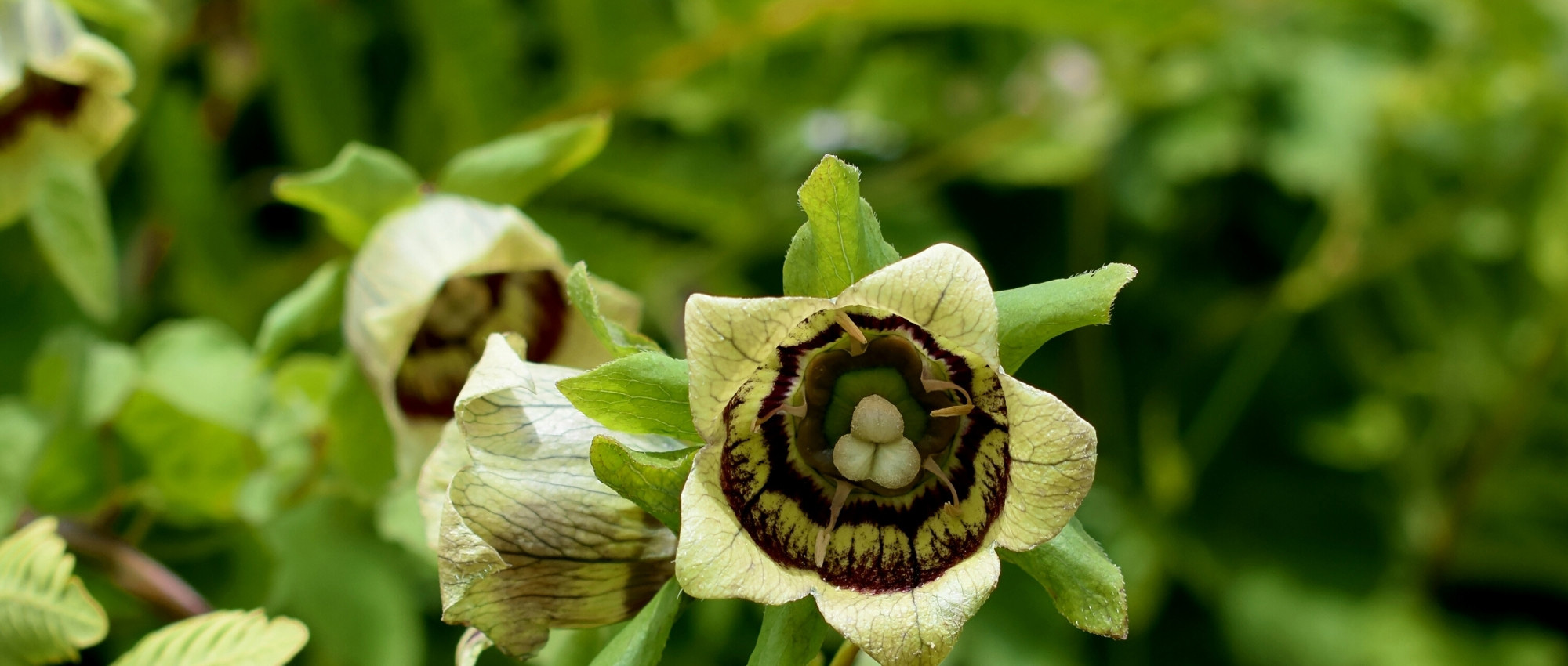
Codonopsis: planting, growing, and care
Contents
Codonopsis in a nutshell
- Codonopsis are rare and little-known Asian perennials
- They produce delicate trailing bell-shaped flowers in white, cream yellow, blue, or green
- Their flowers sometimes feature very beautiful patterns inside
- There are many species, some of which are climbing
- They are hardy plants, capable of withstanding temperatures as low as -15 °C
A word from our expert
Codonopsis are herbaceous perennial plants native to Asia, which offer (usually in summer) very beautiful star-shaped or bell-shaped flowers, in shades of white, cream yellow, blue, green, purple… reminiscent of those of campanulas! The insides of their flowers are sometimes maculate with lovely coloured patterns. Codonopsis also boasts generous tender green foliage. Some species are climbing and can reach up to two metres in height, while others are perennials that do not exceed 40-50 cm in height.
In addition to their ornamental interest, several species are used in traditional Chinese medicine. Codonopsis pilosula, for example, is renowned for its energising properties, earning it the nickname “poor man’s ginseng.” Codonopsis lanceolata, on the other hand, is used in Korean cuisine.
Codonopsis are quite hardy plants, tolerating temperatures as low as -15 °C without issue. They prefer soils rich in humus, cool and well-drained, and thrive in non-burning sunlight or partial shade. The smaller species are perfect for rockeries, while the larger ones will find their place in woodlands or in a perennial plant bed. Climbing species, for their part, should be planted at the base of a support, such as in front of a wall with trellis or at the foot of a bush they can climb.
Botany
Botanical data
- Latin name Codonopsis sp.
- Family Campanulaceae
- Common name Codonopsis, poor man's ginseng
- Flowering summer
- Height very variable, between 30 cm and 2 m
- Exposure sun or partial shade
- Soil type humus-bearing, cool, well-drained
- Hardiness -15 °C
Codonopsis are herbaceous perennials, sometimes climbing, native to East Asia. There are 53 species found in China, the Himalayas, Japan, Korea, Mongolia, and more. They are still relatively unknown and rarely cultivated in France. Some species are reputed to be medicinal or edible and are traditionally used in Asia for this reason. Codonopsis are generally found in the wild on rocky slopes, in thickets, meadows, or forest edges in mountainous regions (notably in the Himalayas). They are quite hardy plants, tolerating temperatures as low as -15 °C.
Codonopsis belongs to the family Campanulaceae, which also includes bellflowers, as well as other ornamental plants like lobelia, phyteuma, platycodon, and jasione… The bell-shaped flowers of Codonopsis resemble those of bellflowers.
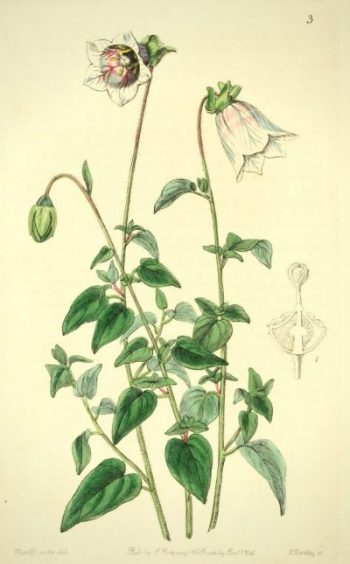
Codonopsis ovata: Botanical illustration
Codonopsis are plants with upright, sprawling, or climbing stems. Their height varies significantly among different species: for instance, Codonopsis ovata does not exceed 30-40 cm in height, while Codonopsis convolvulacea and C. pilosula, which are climbing, have twining stems that can reach 2 meters in height.
Most Codonopsis flower in summer, between July and September. They produce bell-shaped flowers reminiscent of those of bellflowers (not surprising since they are in the same family)… they are often referred to as “campanulate bells”! The flowers are solitary and drooping, inclined towards the ground. They are generally terminal (inserted at the top of the stems), and more rarely in some species, they can be axillary (inserted at the axil of the leaves or secondary stems). The flowers consist of five petals (corolla) and five sepals (calyx) fused together, forming bell-shaped structures with five lobes. They contain five stamens that carry pollen. The flowers come in shades of blue, mauve, green, cream yellow, and white. They often have lovely coloured spots inside the corolla tube, as seen in Codonopsis lanceolata!
Codonopsis pilosula bears charming bell-shaped flowers in cream-yellow to green. They are white in Codonopsis clematidea and C. ovata, and a surprising purple hue in Codonopsis ussuriensis. Instead of forming bells, Codonopsis vinciflora is distinguished by its star-shaped flowers that are beautifully open, in a vibrant blue-violet, a more intense shade than most other cultivated species.
Codonopsis have beautiful light green leaves. They are simple, lanceolate, elliptical, or heart-shaped. Generally, they measure between 2 and 5 cm long. Depending on the species, they can be inserted on the stems alternately (one after the other) or oppositely (two leaves facing each other at the same insertion point). Generally, the leaves of Codonopsis emit an unpleasant odour when crushed.
The fruits of Codonopsis are capsules (dry fruits that open at maturity) containing numerous seeds, sometimes winged.

The foliage of Codonopsis ussuriensis (photo peganum), C. clematidea, and C. lanceolata (photo Alpsdake)
Codonopsis generally have thick, fleshy roots, fusiform or tuberous.
The roots of Codonopsis lanceolata are edible. They are consumed in Asia, particularly in Korean cuisine, where they are known as deodeok. They can be eaten raw or cooked, but are usually prepared pickled and pan-fried.
Codonopsis pilosula, on the other hand, is valued in Asia for its medicinal properties, where it is known as Dang Shen. Its roots are used in decoction: they are reputed to combat fatigue and restore energy (which is why this plant is called “poor man’s ginseng”), but also to aid digestion, tone the lungs, treat sore throats and respiratory issues, strengthen the immune system, and improve blood circulation… They are also said to be anti-stress and adaptogenic.

The flowers of Codonopsis ovata, C. rotundifolia, C. ussuriensis, and C. vinciflora (photos: Krzysztof Ziarnek / AdobeStock / Σ64 / C. T. Johansson)
Read also
Planting Perennials and BushesThe main varieties of Codonopsis
The most popular varieties
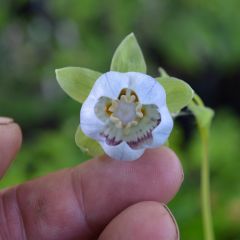
Codonopsis clematidea
- Flowering time June, July
- Height at maturity 40 cm
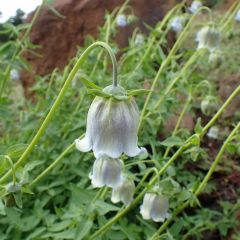
Codonopsis ovata
- Flowering time February
- Height at maturity 50 cm
Discover other Codonopsis
View all →Available in 1 sizes
Available in 1 sizes
Planting
Where to plant?
Codonopsis thrive in partial shade or in non-burning sunlight. This also depends on your geographical location: if you live in the south of France, it’s best to plant them in partial shade, while in the north of the country, you can easily place them in the sun. Plant them in good garden soil, humus-bearing, cool but well-draining, without stagnant moisture, preferably with a neutral or acidic pH.
For climbing species, don’t hesitate to plant them near a support they can climb on: for example, at the foot of a gazebo or pergola, against a fence or trellis, or even at the base of a bush.
Choose the location based on the size and habit of the species you are growing: the smaller codonopsis will be perfect in rockeries, the larger ones will find their place in borders with other perennials or in woodlands, while the climbing codonopsis should be installed at the foot of a bush, a support, or a wall with a trellis on which they can climb.
Feel free to place Codonopsis (especially the non-climbing species) a bit higher, for example in a raised bed, on a mound, or in a rockery, to admire their bell-shaped flowers more easily, particularly the inside of which is often beautifully coloured! You can also grow them in pots and place them on a wall, a garden table, or a windowsill.
When to plant?
Plant Codonopsis in spring (April-May) or in autumn, around October.
How to plant?
If you are installing several plants, maintain at least 30 cm of distance between them.
- Start by preparing a planting hole, two to three times the size of the root ball.
- Add some well-decomposed compost, which you will mix with the planting soil.
- Remove the Codonopsis from its pot and plant it.
- Replace some soil all around, then lightly firm it down.
- Water generously.
- If you are growing a climbing codonopsis (C. convolvulacea, C. tangshen, C. vinciflora…), provide a support for it to cling to.
Continue to water regularly in the weeks following planting.
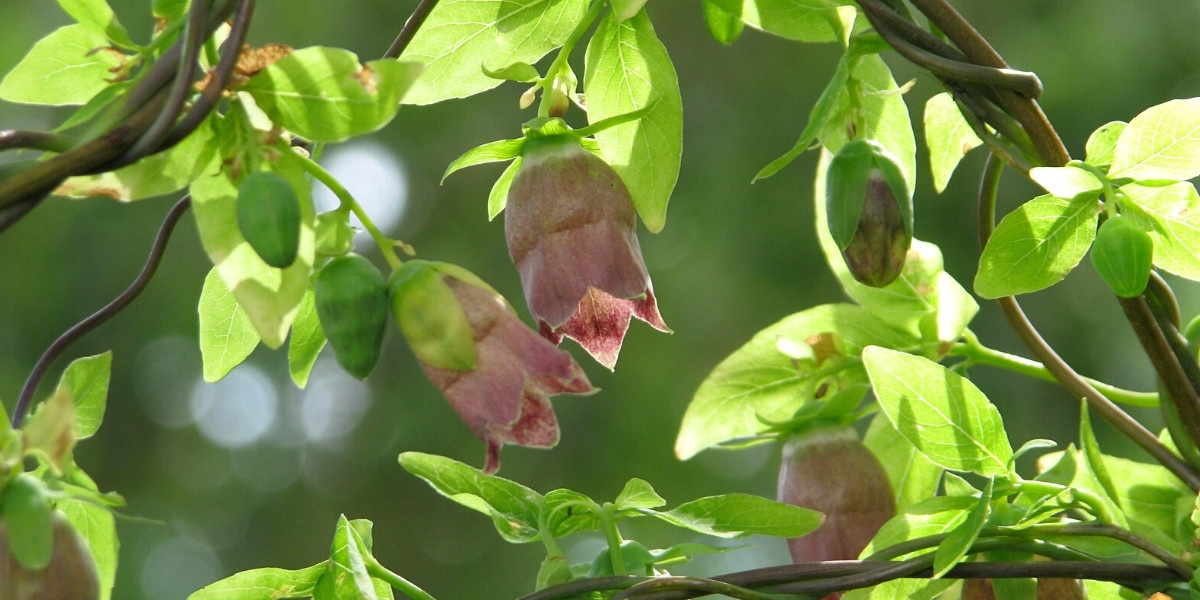
The flowering of Codonopsis ussuriensis (photo peganum)
Read also
Create a Japanese or Zen gardenCare
Codonopsis is a plant that requires relatively little maintenance, but it needs the soil to remain fairly cool in summer: do not hesitate to water if necessary. You can apply a layer of mulch around your Codonopsis plants: this will help retain soil moisture for longer while preventing weeds from growing.
If you are growing a climbing Codonopsis, feel free to assist it at the beginning by guiding its shoots around the support.
In the garden, the leaves and young shoots of Codonopsis are appreciated by snails and slugs, which tend to nibble on them. You can place ash or eggshells around your plants to create a barrier and protect them. If needed, do not hesitate to consult our guide on various techniques to combat slugs. In greenhouses, Codonopsis can sometimes be attacked by red spider mites.
If you wish to harvest the roots of Codonopsis pilulosa, you must wait until the plant is at least 3 years old. The harvest takes place at the end of summer, around September. Carefully dig them up, then let them dry before using them in infusions or decoctions.
Multiplication
The best way to propagate Codonopsis is by sowing.
Sowing
Sowing takes place in early spring, around April.
- Prepare a pot or seed tray by placing special sowing compost in it.
- Lightly firm down and level the surface.
- Sow the seeds by spreading them over the surface.
- Cover with a thin layer of substrate.
- Water gently, using a fine spray.
- Place the pot in a sheltered location, in a bright spot but out of direct sunlight, ideally at a temperature between 16 and 20 °C.
Ensure that the compost remains slightly moist until germination, which usually occurs between 10 days and a month after sowing. Once the young plants are large enough to handle, transplant them into individual pots.
When grown from seeds, it will take a few years before Codonopsis begins to flower.
Pairing ideas
You can integrate codonopsis into a border with other summer-flowering perennials, in partial shade or in non-burning sunlight. Opt for plants that offer a natural and delicate flowering, in soft shades (for example light blue, mauve, soft pink, cream yellow…), such as foxgloves, aconites, astrantias, hardy geraniums, toadflaxes, and sanguisorbas. Also discover the stunning apiaceae Selinum wallichianum, which bears beautiful white umbels in summer! Codonopsis pairs wonderfully with the flowering of campanulas, which, like them, offer small trailing bells. Climbing codonopsis, such as C. pilosula, will be perfect alongside a clematis, which you can train together on a pergola or trellis. Finally, for a beautiful natural and lush effect, don’t hesitate to incorporate some plants with decorative foliage, such as ferns, grasses (for example Hakonechloa macra), heucheras, and lady’s mantle.
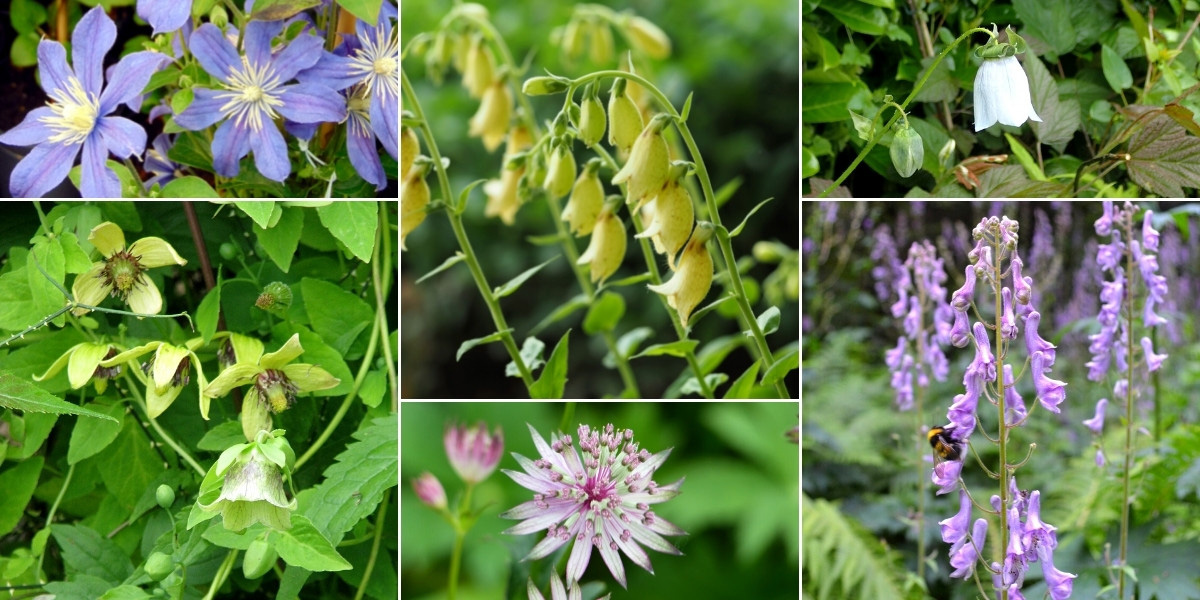
Clematis ‘Arabella’, Digitalis grandiflora, Codonopsis clematidea, Codonopsis pilosula, and Clematis serratifolia (photo peganum), Astrantia major ‘Ruby Star’, and Aconitum scaposum (photo Jan Norman)
As they are native to China, Japan, and Korea, codonopsis will also find its place in a minimalist Asian-style garden. Create a zen garden, conducive to meditation, by pairing them with Japanese maples, bamboos, rhododendrons, hostas, ferns, and Hakonechloa macra… Feel free to check out our selection of shrubs and perennials for Japanese gardens.
Codonopsis pilosula will easily fit into a garden of aromatic and medicinal plants. You will thus have all the necessary plants to make your infusions, decoctions, and other medicinal preparations. Plant it alongside common sage, marigolds, chamomiles, mint, and valerian.
Useful resources
- Subscribe!
- Contents

































Comments